IGCSE Edexcel Biology - Plant Reproduction
1/37
There's no tags or description
Looks like no tags are added yet.
Name | Mastery | Learn | Test | Matching | Spaced |
|---|
No study sessions yet.
38 Terms
Anthers
Site of pollen grain production. Part of the stamen.
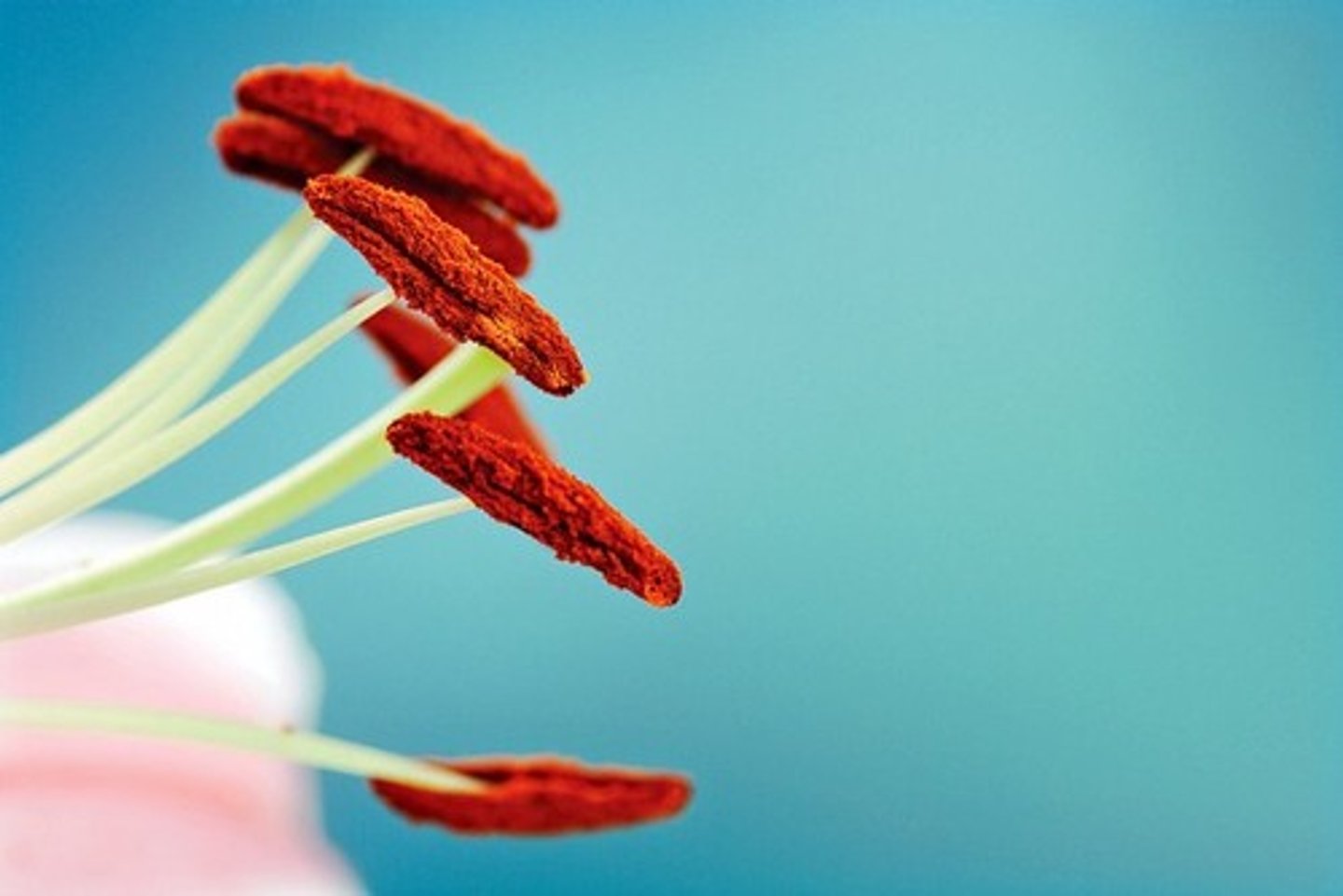
Carpel
The female reproductive organs of a plant - collective term for the style, stigma and ovary.
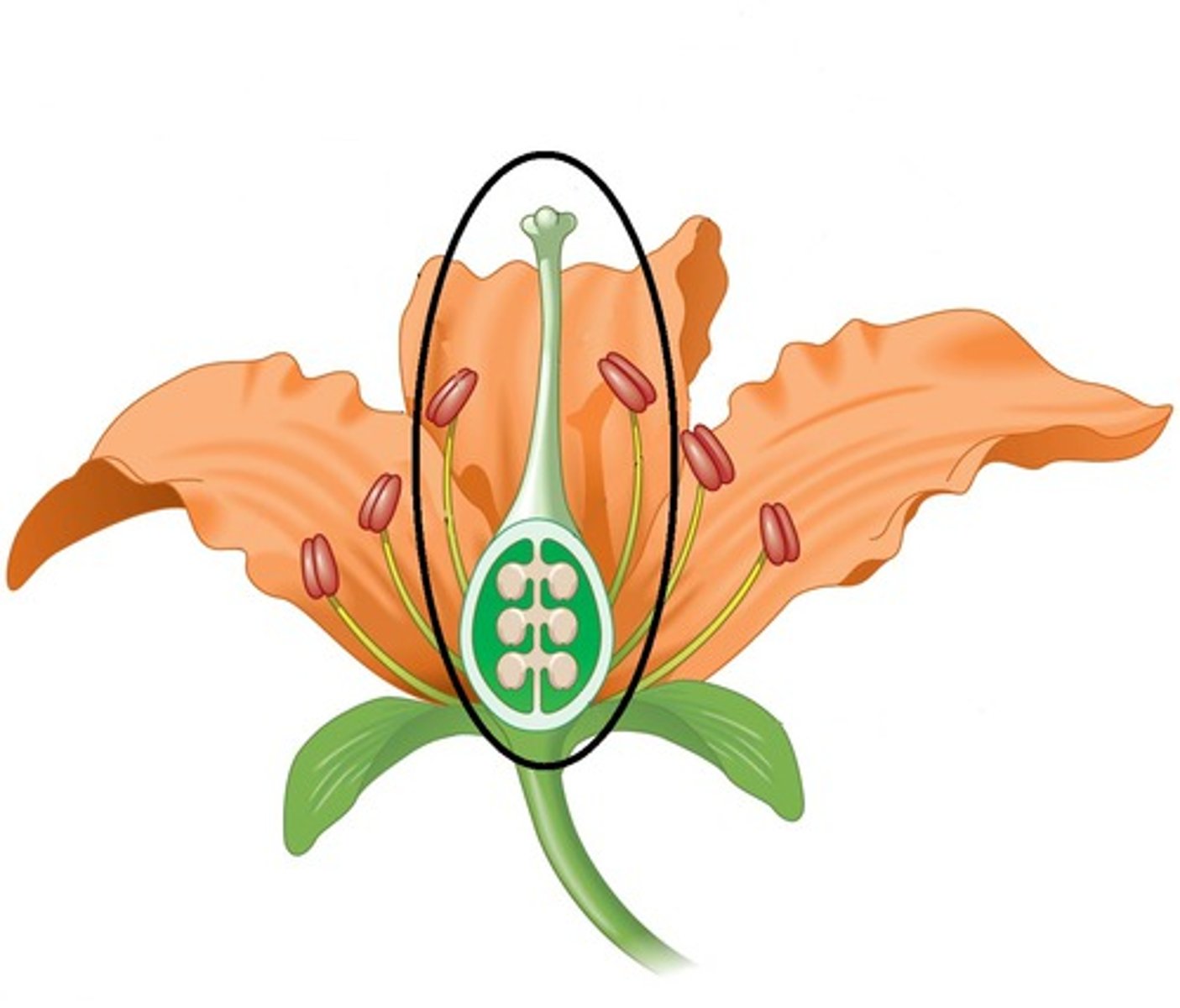
Fertilisation
The fusion of the nuclei of the male and female gametes
Filament
The long stalk that connects the anther to the rest of the plant. Also part of the stamen.
Ovary
Contains the ovule, which encloses the female gamete. It's wall may become part of the fruit on fertilisation
Ovule
Site of ovum production. Found in the ovary.
Ovum
Female gamete
Pollen grain
Male sex cell or gamete.
Pollination
The transfer of pollen from the anther to the stigma of a plant of the same species.
Stamen
The male reproductive organ of a plant - collective term for the anther and filament.
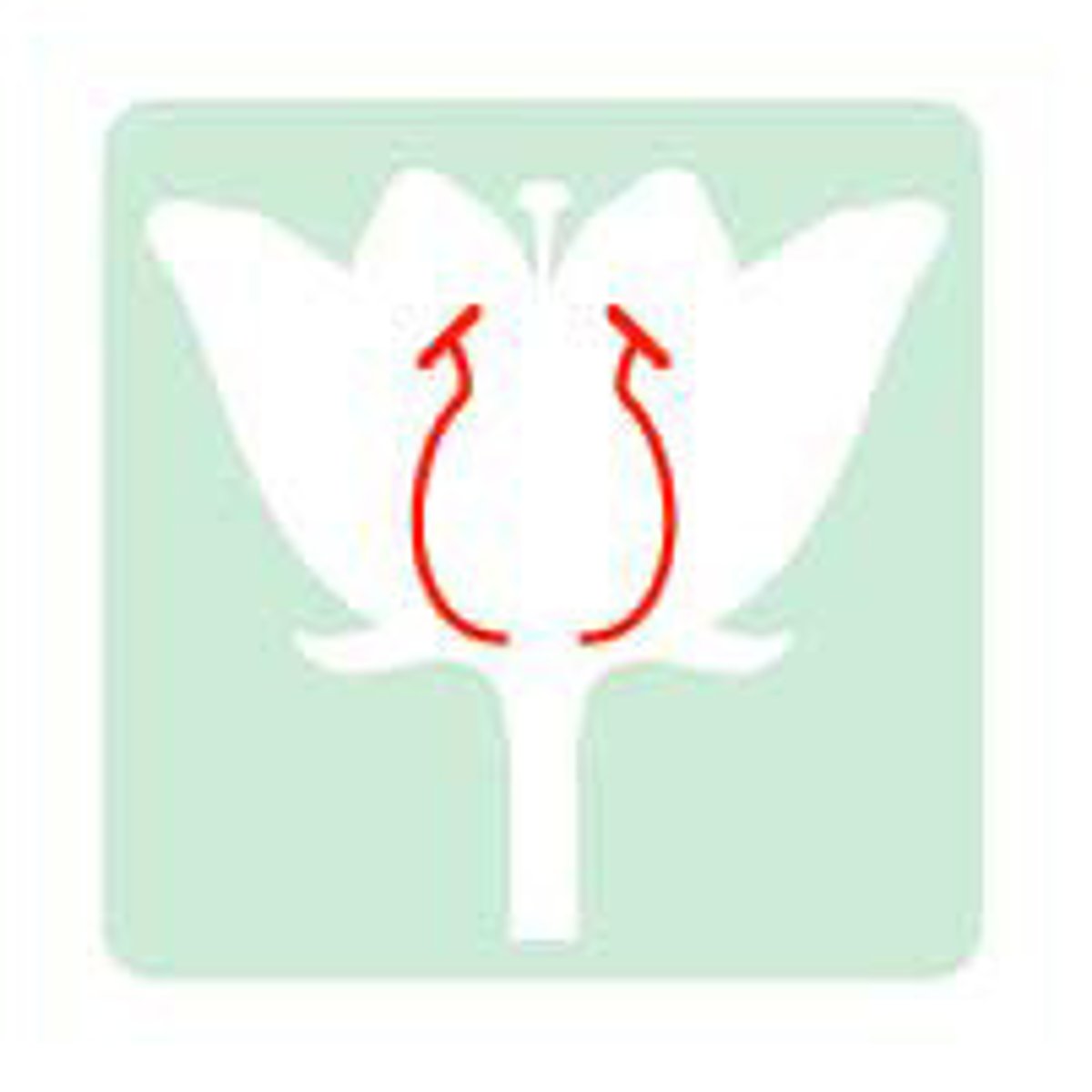
Stigma
Part of the female reproductive organs. Surface on which the pollen grains containing male gametes may be disposed
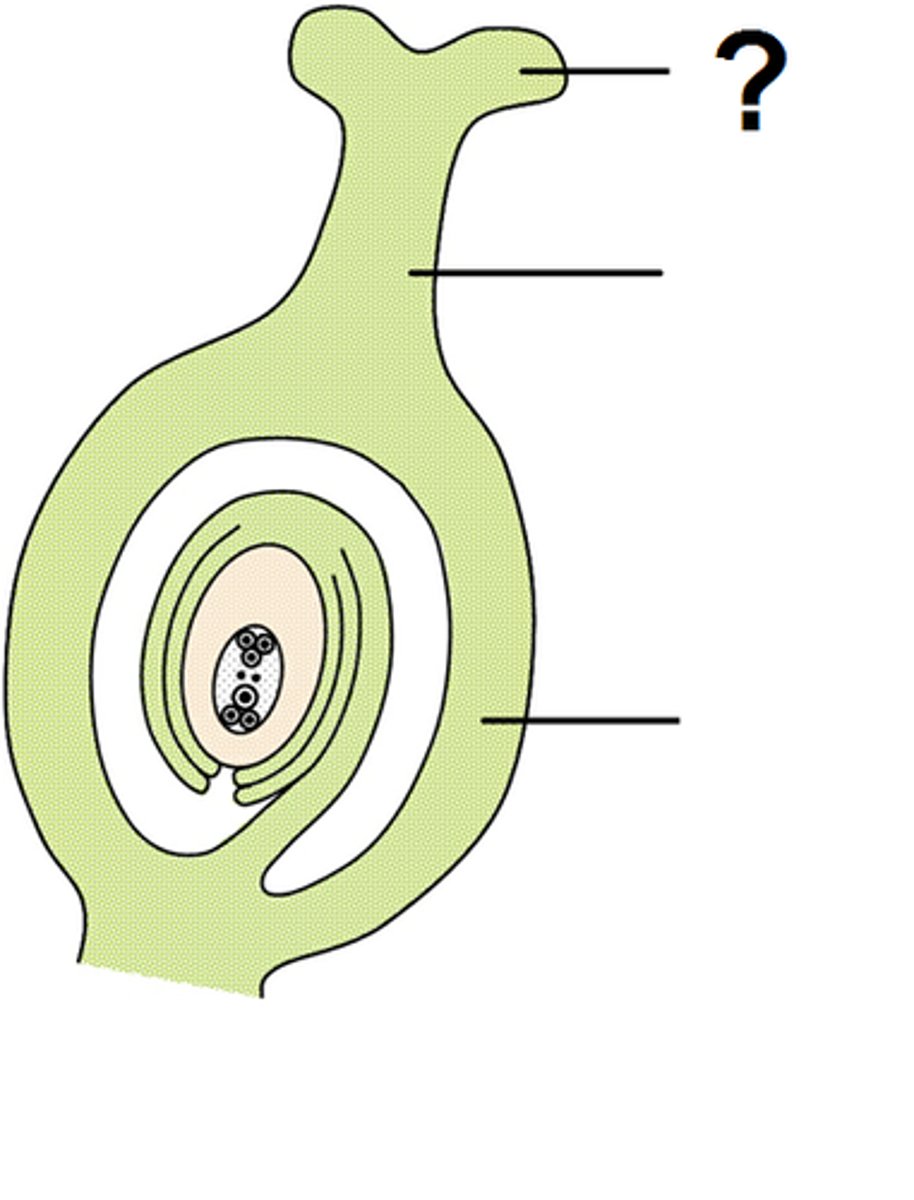
Style
The part of the carpel that joins the stigma to the ovary. Holds stigma in place
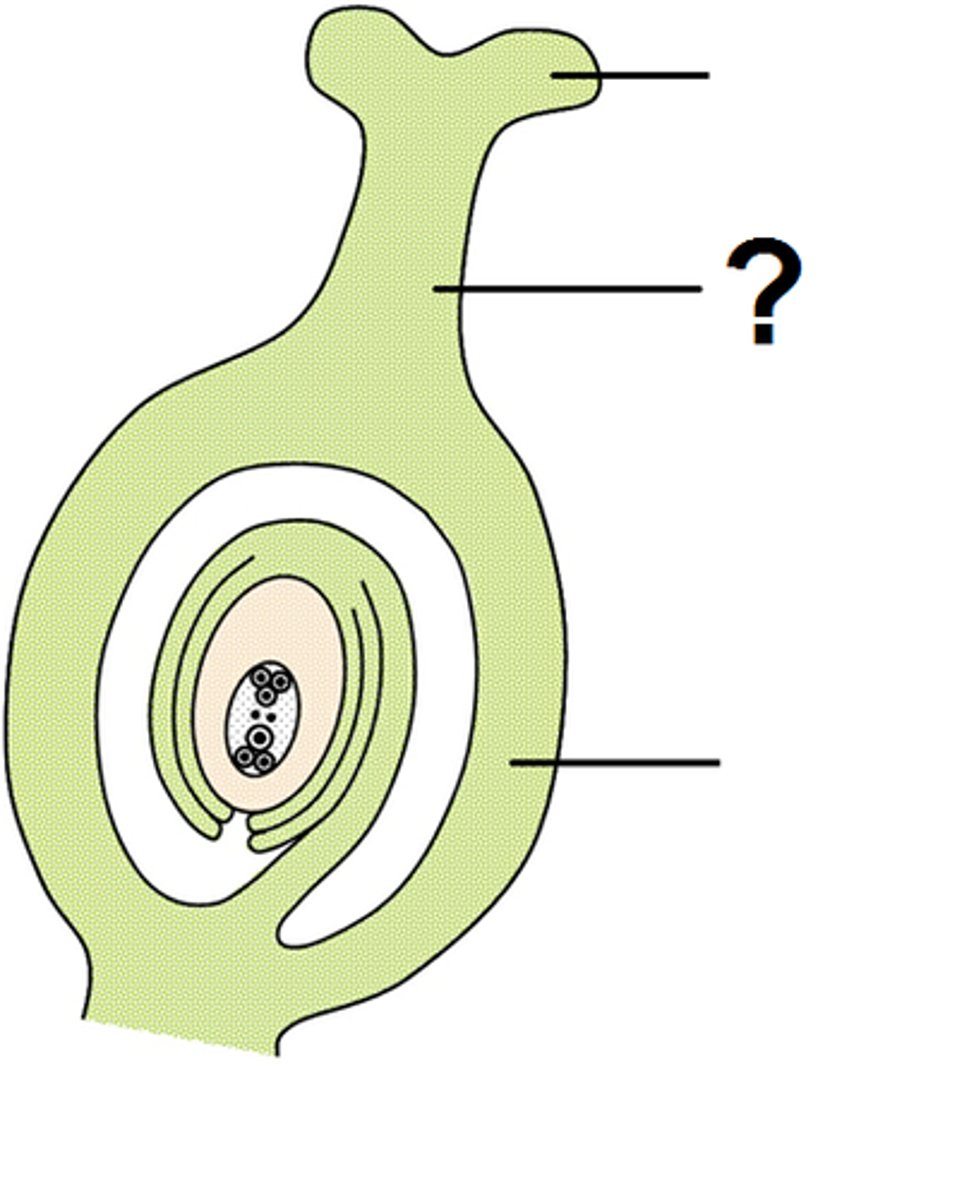
Nectary
Produces nectar- a sugary liquid for pollinating insects
Sepal
protects the flower from drying out and fungal attacts
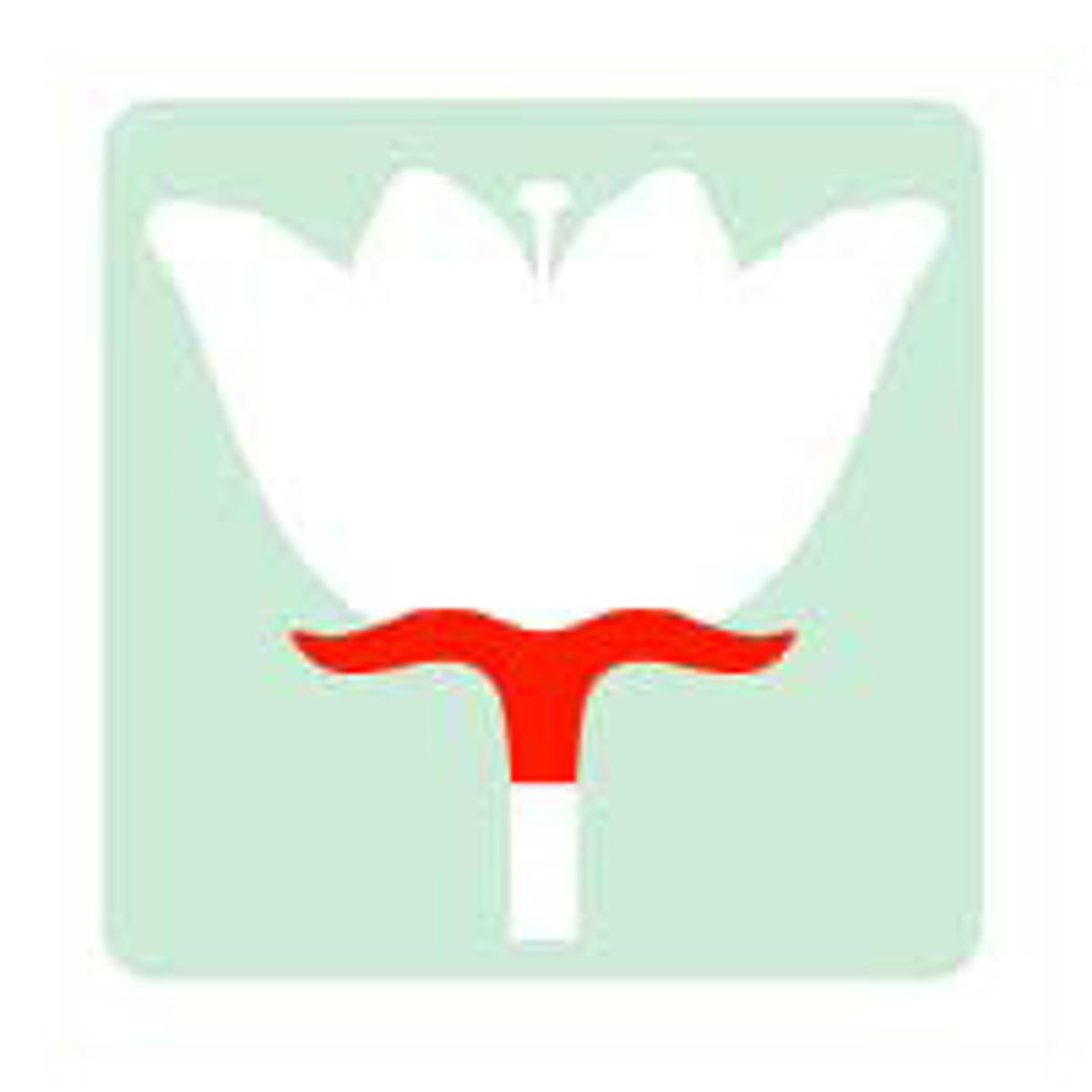
Cross-pollination
Pollen transfer between different flowers of the same species. Involves genetic variation but is risky as a vector (carrier) is required.
Self-pollination
involves pollen transfer between the stamen and stigma of the same flower. It is less risky and ensures survival of species but limits genetic variation.
Pollen Tube
Grows down the style from the pollen grain and acts as a channel to deliver the male gamete to the ovum.
Seed Germination
Requires water, oxygen and a good temperature
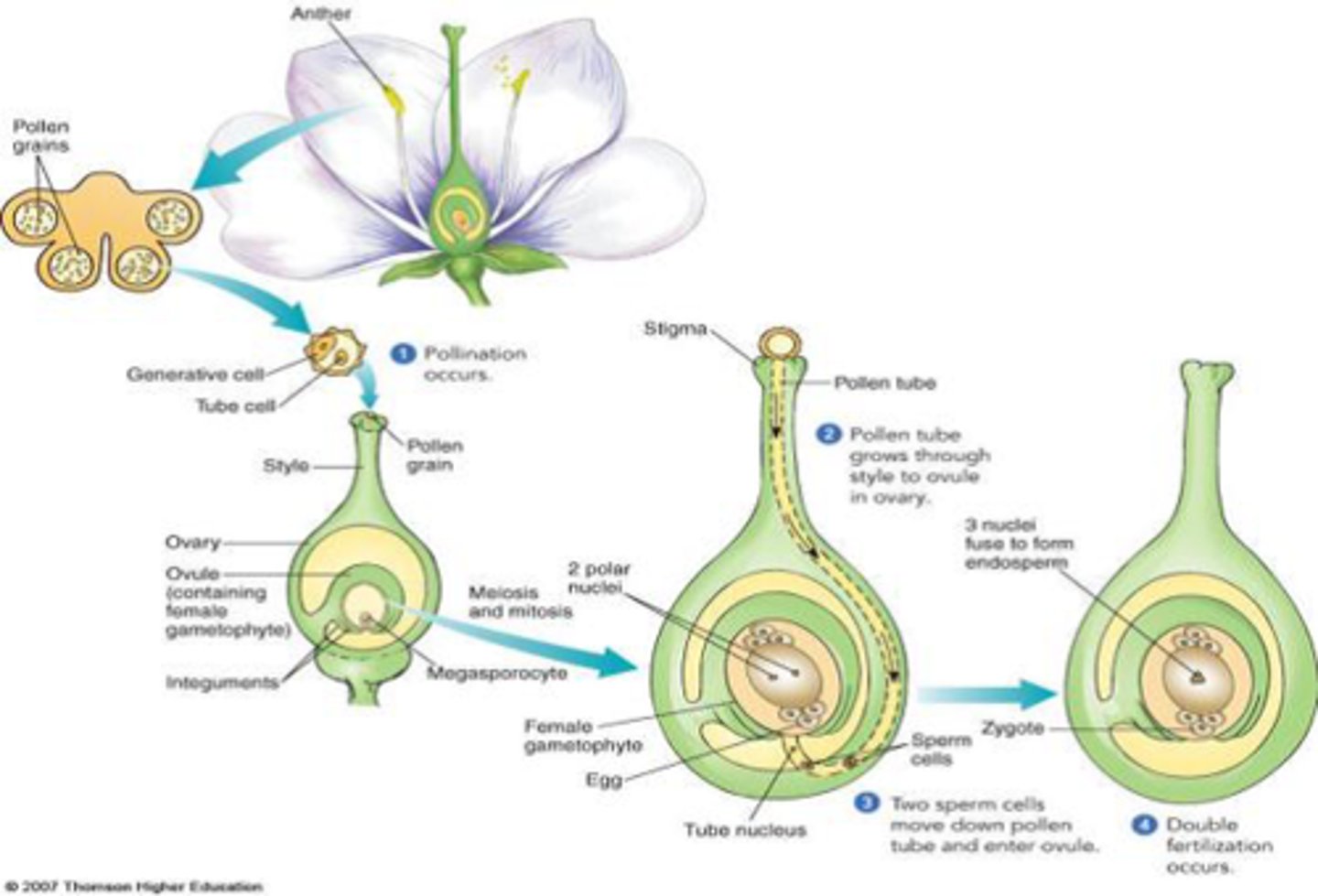
Seed dispersal
Allows plants to colonise new areas. There's less competition for for resources and it stops overcrowding
Runners
Used by plants for Asexual reproduction
What is 1 and it’s function?
Petal
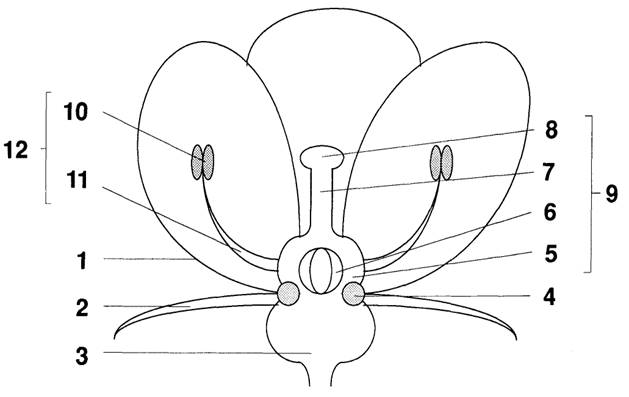
What is 2 and it’s function?
Sepal
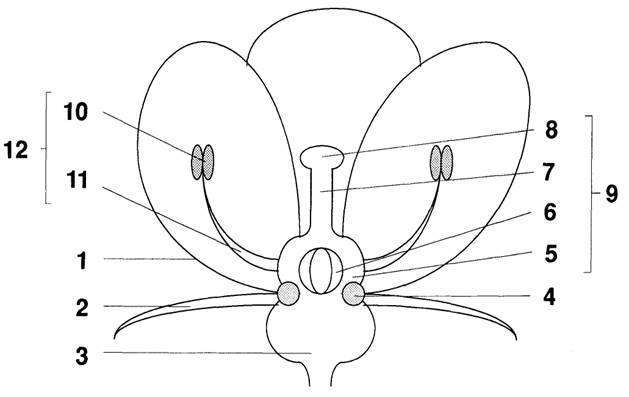
What is 3?
Receptacle
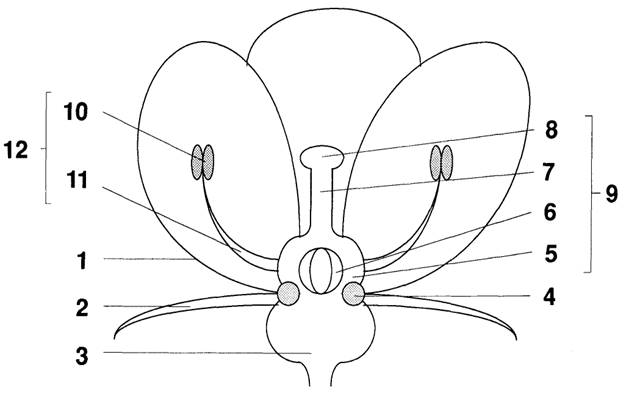
What is 4?
Nectary
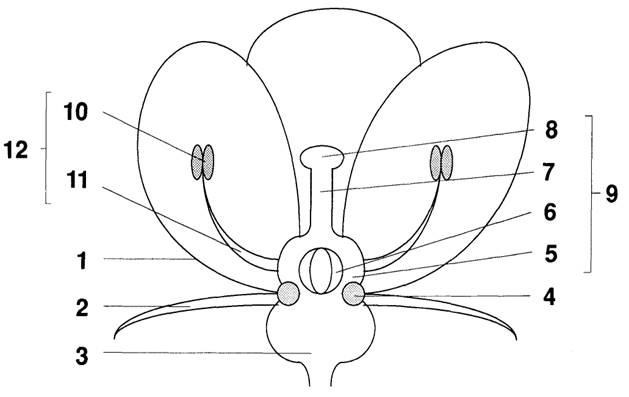
What is 5?
Ovary
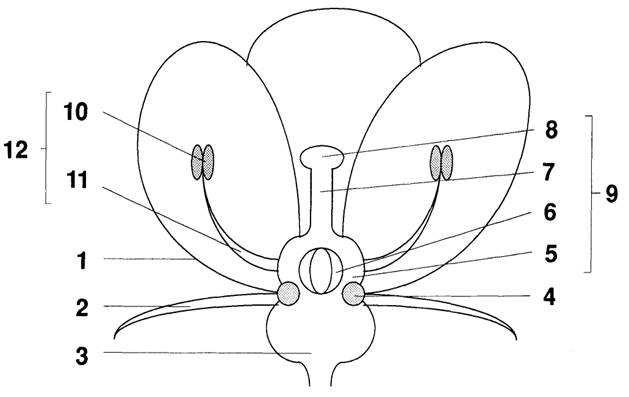
What is 6?
Ovule
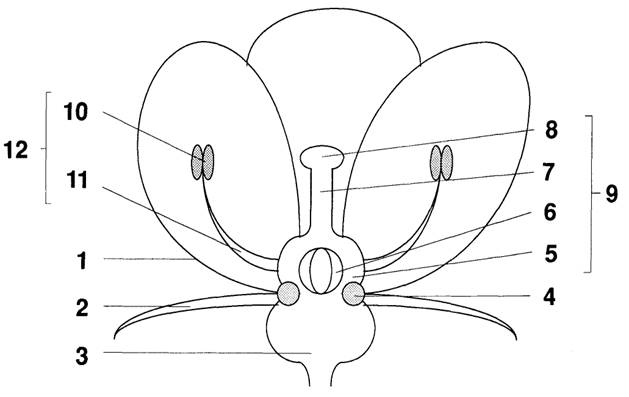
What is 7?
Style
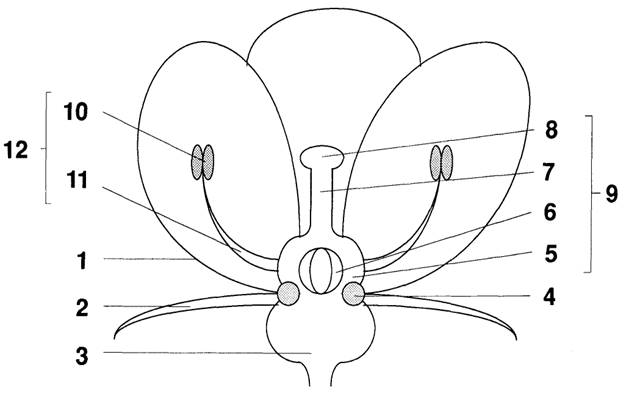
What is 8?
Stigma
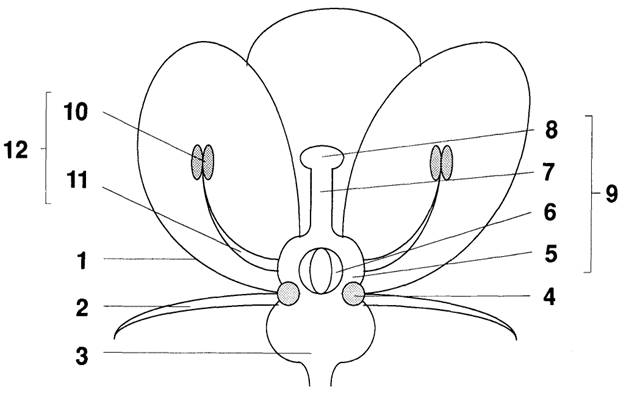
What is 9?
Carpel
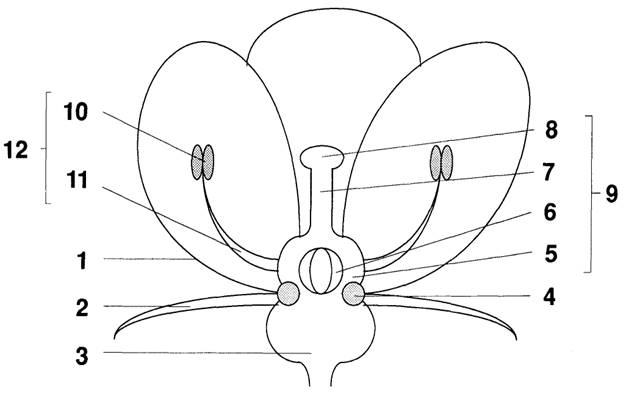
What is 10?
Anther
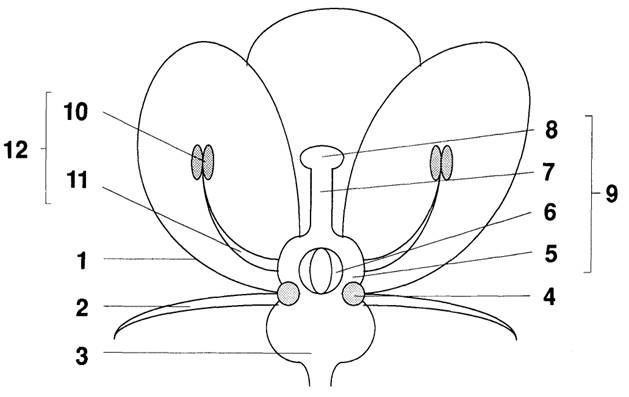
What is 11?
Filament
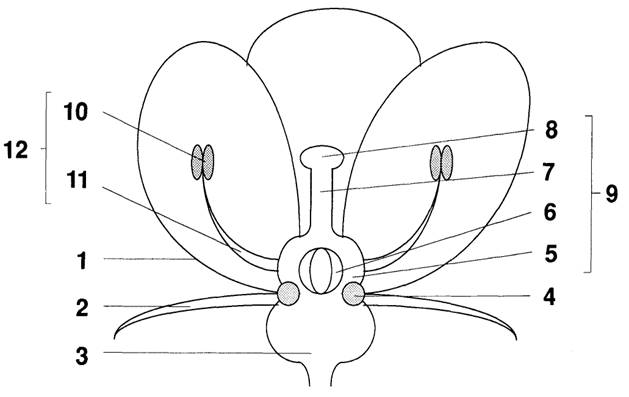
What is 12?
Stamen
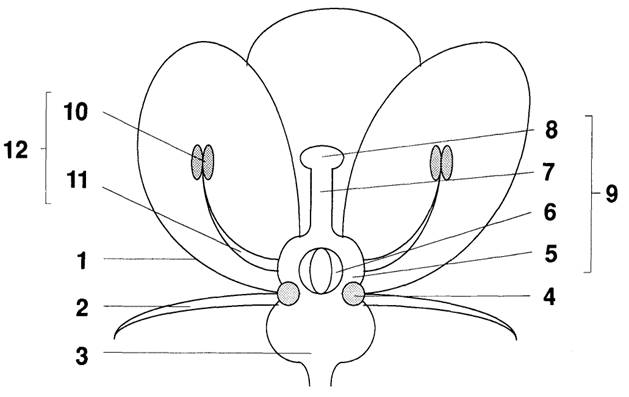
Petals (wind pollinated)
Small and dull (green/brown colour), as producing colourful petals would be a waste of energy
Scent, nectar (wind pollinated)
Not produced - would waste energy
Number of pollen grains (wind pollinated)
Large amounts produced as not many are transferred to another flower, so more increases chances of a successful pollination
Pollen grains (wind pollination)
Smooth, small, light so they can be carried by wind
Anthers (wind pollination)
Held on long filaments outside the flower to help them release into the wind to pollinate
Stigma (wind pollinated)
Feathery stigmas outside the flower catch airborne pollen grains